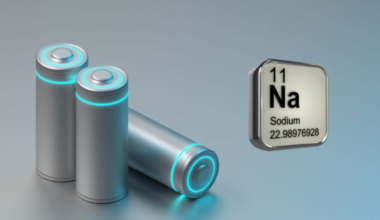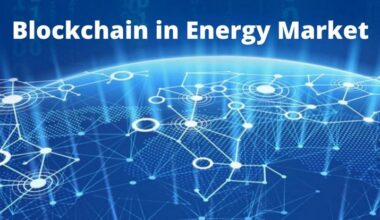Breakthrough Achievement In Solar Cell Efficiency: Scientists Smash NEW World Record in Solar Cell Efficiency
In a landmark achievement that promises to redefine the future of renewable energy, researchers have shattered previous performance barriers to establish a new world record for solar cell efficiency. This breakthrough comes at a critical juncture as nations worldwide race toward decarbonization and energy security, placing solar cell efficiency at the forefront of technological innovation and investment strategies. By pushing the limits of how effectively sunlight can be converted into electricity, this new record unlocks unprecedented potential for cost reductions, system compactness, and broader adoption across residential, commercial, and industrial sectors. As the global community strives to meet aggressive net-zero targets, advances in solar cell efficiency not only accelerate the transition to clean power but also catalyze economic growth through job creation, new manufacturing opportunities, and enhanced energy independence. This comprehensive news report delves deep into the scientific underpinnings of this record-setting development, examines the institutions and methodologies involved, and explores the far-reaching implications for the solar energy market and beyond. LongiAxios
Understanding Solar Cell Efficiency: Why Every Percentage Point Matters
Achieving high solar cell efficiency is more than an academic accolade—it directly translates to greater energy yield per unit area, reduced balance-of-system costs, and lower levelized cost of electricity (LCOE) for end-users. In simple terms, a solar panel with 34% efficiency generates more electricity from the same amount of sunlight than one with 20% efficiency, enabling smaller installations or higher output for rooftop, utility-scale, and off-grid applications alike. Pushing the efficiency envelope is essential not only for maximizing land use and minimizing environmental footprints but also for lowering the overall cost of solar power to compete viably with fossil fuels. As of April 2025, crystalline silicon-perovskite tandem configurations have emerged as the leading pathway to surpass conventional single-junction limits, combining the robustness of silicon with the superior light-harvesting properties of perovskite materials. This synergistic approach has led to cascading record improvements, culminating in the latest milestone. LongiAxios
The Breakthrough: 34.85% Certified Efficiency by LONGi
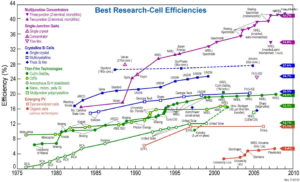
At the vanguard of this leap is LONGi Green Energy Technology Co., Ltd., whose research and development team recently unveiled a two-terminal crystalline silicon-perovskite tandem solar cell achieving a certified solar cell efficiency of 34.85% Longi. Independently validated by the U.S. National Renewable Energy Laboratory (NREL), this result surpasses the Shockley–Queisser single-junction limit of 33.7%, a theoretical barrier that stood unchallenged for decades Longi. By integrating a perovskite top cell optimized for high-energy photon absorption with a silicon bottom cell tailored for lower-energy photons, LONGi’s design harnesses a broader spectrum of sunlight. This architectural innovation not only pushes the performance envelope but also leverages scalable manufacturing techniques compatible with existing silicon production infrastructure, setting the stage for rapid commercialization. LongiAxios
Certification and Validation: The Role of NREL
Certification by authoritative bodies like NREL is critical for ensuring that laboratory achievements translate into reliable, real-world performance. In January 2025, LONGi submitted samples of its tandem cells to the NREL’s Photovoltaic Research and Testing Laboratory, which employs calibrated solar simulators, temperature controls, and standardized measurement protocols to verify efficiency claims. After rigorous testing, NREL confirmed the 34.85% peak efficiency under standard test conditions (STC: 1000 W/m² irradiance, 25 °C cell temperature, AM 1.5G spectrum). This certification not only legitimizes LONGi’s record but also provides developers, investors, and policymakers with confidence in adopting next-generation tandem technologies. As a result, financing and deployment of high-efficiency systems are expected to accelerate, benefiting from NREL’s unbiased validation. LongiAxios
Technical Insights: How Tandem Cells Achieve Superior Performance
Tandem solar cells, such as those developed by LONGi, exploit multiple semiconductor layers with complementary bandgaps to capture different parts of the solar spectrum. The top perovskite layer, often composed of organic–inorganic hybrid materials like methylammonium lead halide variants, excels at converting high-energy blue and ultraviolet photons. Below it, the silicon layer handles lower-energy red and infrared photons with remarkable internal quantum efficiencies. By stacking these layers, tandem cells reduce thermalization losses—where excess photon energy dissipates as heat—and underutilization of sub-bandgap photons, both inherent in single-junction silicon cells. Achieving high solar cell efficiency thus hinges on precise control of interfacial recombination, perovskite crystallinity, and optical management through anti-reflective coatings and light-trapping textures. Recent advancements in passivation techniques and scalable deposition methods have been pivotal in elevating tandem performance to record-breaking levels. LongiAxios
Surpassing Theoretical Limits: Beyond Shockley–Queisser
The classical Shockley–Queisser limit sets an upper bound of about 33.7% efficiency for single-junction cells under one-sun illumination conditions. Tandem architectures, however, raise this theoretical cap to approximately 42–45%, depending on the chosen bandgap combinations. LONGi’s 34.85% result represents a significant stride toward this tandem ceiling, demonstrating the viability of scaling beyond single-junction constraints. Notably, perovskite materials offer tunable bandgaps through compositional engineering—by adjusting halide ratios or introducing mixed-cation formulations—to fine‑tune spectral absorption and mitigate photoinstability. The translation of these laboratory innovations into certified efficiencies paves the way for practical devices that could routinely exceed 35% in coming years, reshaping benchmarks for performance and cost-effectiveness in solar energy. LongiAxios
Complementary Records: A Global Race in Solar Efficiency
LONGi’s milestone is part of a broader wave of efficiency breakthroughs worldwide:
-
University of Queensland (UQ): Achieved a 16.65% certified efficiency with a tin halide perovskite (THP) cell, emphasizing eco-friendly, lead‑reduced compositions Tech XploreSustainability Times.
-
JinkoSolar: Reported 33.84% efficiency in an N‑type TOPCon-based perovskite-silicon tandem, validated by the Shanghai Institute of Microsystem and Information Technology SolarQuarter.
-
Hanwha Qcells: Set a 28.6% record for commercially scalable perovskite-silicon tandem cells, certified by Fraunhofer ISE Hanwha.
-
HZB & Humboldt University Berlin: Reached 24.6% efficiency in CIGS-perovskite tandems, certified by Fraunhofer ISE, highlighting environmentally benign thin-film combinations ScienceDaily.
-
Korean Institute of Energy Research (KIER): Demonstrated 23.64% for a flexible perovskite-CIGS tandem, pointing to lightweight, portable applications pv magazine International.
This mosaic of achievements underscores a competitive global landscape, where academia and industry collaboratively accelerate the innovation cycle for solar cell efficiency. Tech XploreSolarQuarter
Eco-Friendly Alternatives: Tin Halide Perovskites
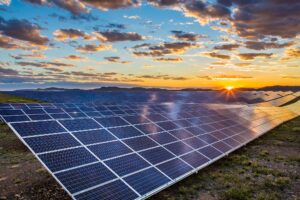
While traditional perovskites rely on lead-based chemistries, concerns over toxicity have spurred research into lead-reduced or lead-free alternatives. University of Queensland’s team, led by Prof. Lianzhou Wang, pioneered tin halide perovskite solar cells, achieving a certified solar cell efficiency of 16.65% with minimal lead content Tech XploreSustainability Times. This eco‑centric approach not only lowers environmental risks but also leverages earth-abundant materials. Innovations in stabilizing tin oxidation states and advanced interface engineering were critical in mitigating rapid degradation, historically a barrier for tin-based devices. Although current efficiencies lag behind tandem counterparts, these developments signal a promising path toward sustainable, high-performance photovoltaics. Sustainability Times
Flexible and Lightweight: The Perovskite-CIGS Tandem Frontier
In parallel, research into hybrid thin‑film tandems has yielded remarkable progress. Scientists at KIER reported a flexible perovskite‑CIGS tandem achieving 23.64% efficiency, combining the versatility of perovskites with the proven stability of CIGS (copper indium gallium selenide) pv magazine InternationalRinnovabili. The resulting cells are lightweight, mechanically robust, and amenable to roll-to-roll manufacturing, making them ideal for aerospace, portable power, and building-integrated photovoltaics. Such configurations demonstrate how solar cell efficiency gains need not come at the expense of adaptability, opening new markets beyond conventional rigid modules.
From Lab to Market: Commercialization Challenges
Translating record-breaking solar cell efficiency from controlled laboratories into cost-effective, reliable products faces several hurdles:
-
Stability and Durability: Perovskite layers are prone to moisture, oxygen ingress, and thermal stress, necessitating robust encapsulation and barrier technologies.
-
Scaling Deposition Processes: Uniform, defect‑free perovskite layers over large areas require precise control in scalable methods like slot-die coating or vapor deposition.
-
Manufacturing Integration: Tandem architectures must integrate seamlessly with existing silicon cell lines to minimize capital expenditure and production disruptions.
-
Supply Chain and Materials: Ensuring consistent access to high-purity perovskite precursors, specialty substrates, and encapsulants is essential for quality control.
Addressing these challenges demands concerted efforts across material science, engineering, and industrial partnerships. Several pilot production lines are already underway, with companies like Hanwha Qcells and JinkoSolar announcing plans to initiate commercial-scale runs of tandem panels by late 2025.
Economic and Environmental Impacts
Enhanced solar cell efficiency directly lowers the payback period for photovoltaic installations, making solar power economically competitive without subsidies. Analysts predict that achieving 30–35% efficient modules at scale could reduce LCOE by 20–30%, accelerating adoption in both developed and emerging markets. Moreover, higher efficiencies mean less land use for utility-scale projects, mitigating ecological disruption and permitting challenges. From a carbon footprint perspective, more efficient panels yield greater carbon offsets over their lifetime, contributing significantly to national and corporate net-zero pledges. As global energy demand continues to rise, breakthroughs in solar cell efficiency are pivotal in steering investments toward solar PV as the cornerstone of a sustainable energy portfolio.
Expert Perspectives: Voices from the Field
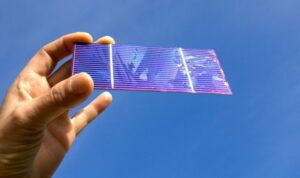
-
Dr. Xin Zhang, NREL: “LONGi’s achievement is a testament to the maturity of tandem technologies. It signals a tipping point where laboratory records translate into scalable products.”
-
Prof. Lianzhou Wang, UQ: “Our work on tin halide perovskites addresses environmental concerns without sacrificing performance. We envision eco-friendly modules powering remote communities.”
-
Emiliano Bellini, PV Magazine: “Flexible perovskite-CIGS tandems open exciting avenues for solar integration in transportation, textiles, and beyond.”
Future Outlook: Toward 40% and Beyond
The relentless pursuit of higher solar cell efficiency is already shaping next-generation concepts:
-
Multi‑junction stacks: Adding a third layer (e.g., perovskite-perovskite-silicon) could push efficiencies above 40%.
-
Quantum dot sensitization: Leveraging quantum confinement effects to capture a broader spectral range.
-
Transparent tandem cells: For window-integrated photovoltaics, seamlessly combining aesthetics with power generation.
-
Organic-inorganic hybrids: Exploring new perovskite formulations to enhance stability and reduce lead content further.
With sustained R&D investment, some experts project commercial modules exceeding 35% efficiency by 2027, and lab devices approaching 45% in the next decade. This trajectory underscores the pivotal role of solar cell efficiency in unlocking a cleaner, more resilient energy future.
Global Implications and Policy Drivers
Governments and industry alliances are recognizing high-efficiency solar as a strategic asset:
-
EU Green Deal: Offers incentives for ultra-high-efficiency PV to meet climate neutrality by 2050.
-
U.S. Inflation Reduction Act: Provides tax credits for advanced PV technologies, including tandem cells.
-
China’s 14th Five-Year Plan: Prioritizes perovskite-silicon tandem R&D and domestic manufacturing subsidies.
-
Renewable Energy Targets: Nations with 2030 solar deployment goals are recalibrating capacity estimates based on anticipated efficiency gains.
Supportive policies, coupled with declining material costs and improved manufacturing yields, create fertile ground for the rapid deployment of record-breaking solar cell efficiency technologies.
Read Also: High Efficiency Solar Panels Breakthrough: New Molecule Supercharges Perovskite Cells for Unmatched Performance & Stability
Conclusion
The relentless advancements culminating in a solar cell efficiency world record of 34.85% embody the relentless spirit of innovation driving the renewable energy revolution. From transformative materials science to cutting-edge manufacturing, each incremental gain propels solar power closer to ubiquity, affordability, and environmental stewardship. As researchers, industry leaders, and policymakers collaborate to overcome stability, scale-up, and supply chain challenges, the promise of ultra-efficient solar cells will catalyze a future where clean energy is not merely an alternative but the global standard. The journey toward unprecedented efficiency benchmarks continues—and with every new record, we move one step closer to illuminating the world with sustainable power.




